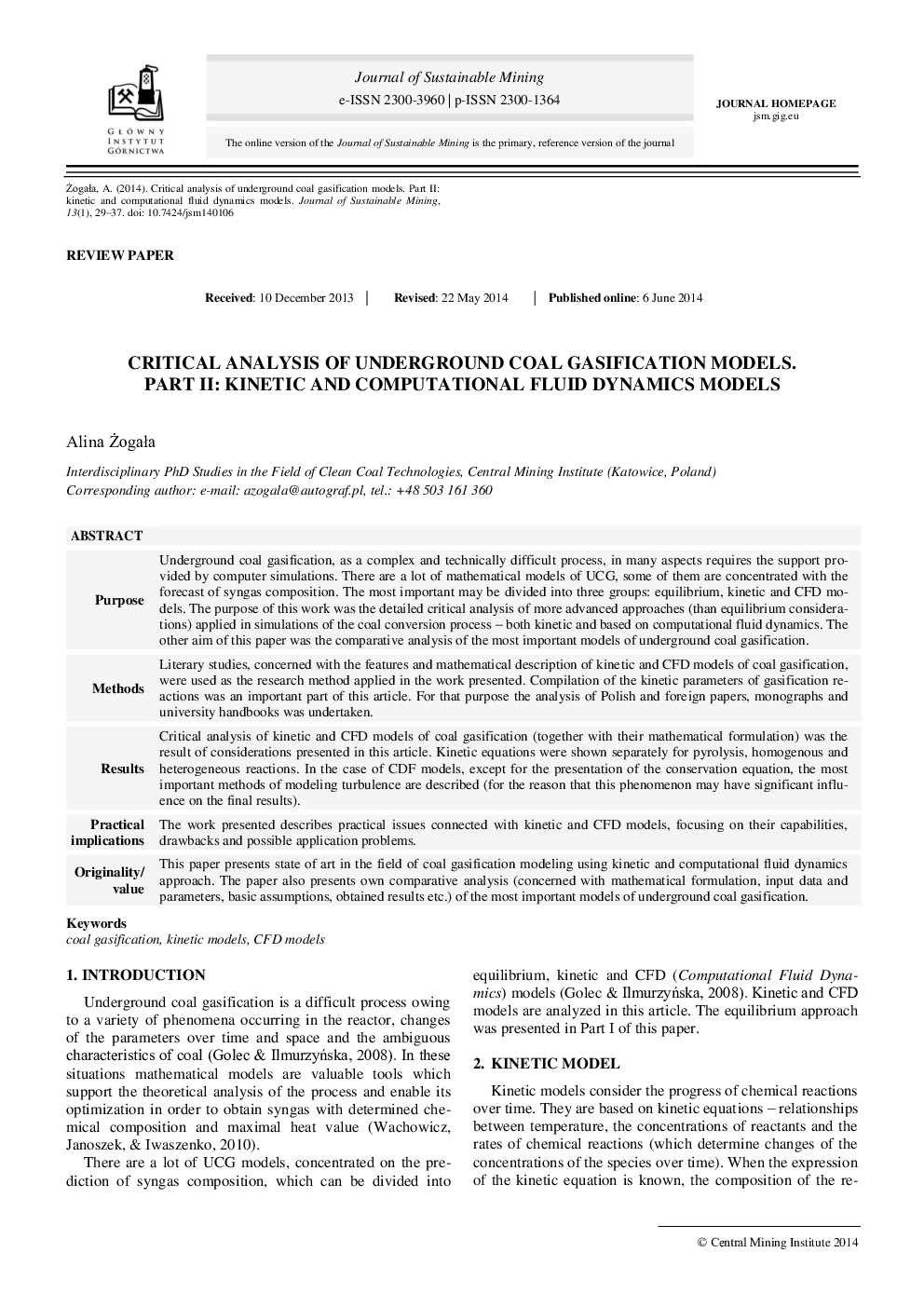| کد مقاله | کد نشریه | سال انتشار | مقاله انگلیسی | نسخه تمام متن |
|---|---|---|---|---|
| 1758439 | 1019171 | 2014 | 9 صفحه PDF | دانلود رایگان |
ABSTRACTPurposeUnderground coal gasification, as a complex and technically difficult process, in many aspects requires the support provided by computer simulations. There are a lot of mathematical models of UCG, some of them are concentrated with the forecast of syngas composition. The most important may be divided into three groups: equilibrium, kinetic and CFD models. The purpose of this work was the detailed critical analysis of more advanced approaches (than equilibrium considerations) applied in simulations of the coal conversion process – both kinetic and based on computational fluid dynamics. The other aim of this paper was the comparative analysis of the most important models of underground coal gasification.MethodsLiterary studies, concerned with the features and mathematical description of kinetic and CFD models of coal gasification, were used as the research method applied in the work presented. Compilation of the kinetic parameters of gasification reactions was an important part of this article. For that purpose the analysis of Polish and foreign papers, monographs and university handbooks was undertaken.ResultsCritical analysis of kinetic and CFD models of coal gasification (together with their mathematical formulation) was the result of considerations presented in this article. Kinetic equations were shown separately for pyrolysis, homogenous and heterogeneous reactions. In the case of CDF models, except for the presentation of the conservation equation, the most important methods of modeling turbulence are described (for the reason that this phenomenon may have significant influence on the final results).Practical implicationsThe work presented describes practical issues connected with kinetic and CFD models, focusing on their capabilities, drawbacks and possible application problems.Originality/valueThis paper presents state of art in the field of coal gasification modeling using kinetic and computational fluid dynamics approach. The paper also presents own comparative analysis (concerned with mathematical formulation, input data and parameters, basic assumptions, obtained results etc.) of the most important models of underground coal gasification.
Journal: Journal of Sustainable Mining - Volume 13, Issue 1, 2014, Pages 29–37
